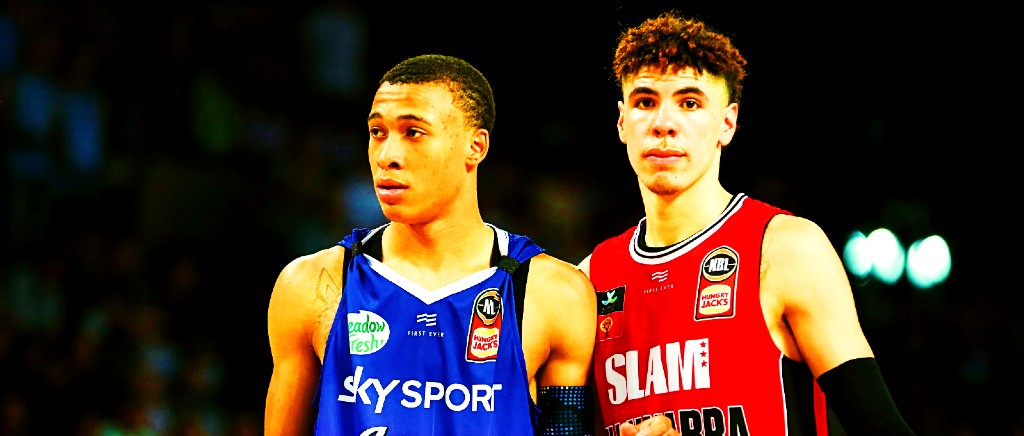Along with the rest of the country and the globe, the NBA season is on hold, with a great deal of uncertainty as to when thing will begin again. To that end, the 2020 NBA Draft is also in limbo.
On one hand, it would be possible for the draft to continue on schedule, simply because the literal act of drafting players could be executed without impacting the widely implemented social distancing practices that are in place. On the other, NBA teams are accustomed to being able to hold private workouts, interviews and even combine-level testing with draft hopefuls and, well, none of that can realistically happen at the moment. On top of that, the draft order is set by teams finishing record and, with the season on hiatus, how they would determine draft order would require some very interesting choices unless they were to cancel the remainder.
With that out of the way, we don’t know when the 2020 NBA Draft will happen but, if nothing else, it is probably safe to assume that it will happen… eventually. The loss of the 2020 NCAA Tournament is official, leaving scouts with a gaping hole in draft evaluation but, with very little else happening, it also provides the opportunity for deep-dive study into the players that could be available.
This mock draft factors in a number of things, including the overall uncertainty, while also attempting to convey some of the realistic ranges for prospects at this time, even at the expense of my own big board. For reference, the draft order in play is the reverse standings as of when the season was shut down, though the league will presumably implement the same lottery process as usual, whenever that may happen.
Let’s take a look at the first round.
1. Golden State Warriors – Anthony Edwards (G, Georgia)
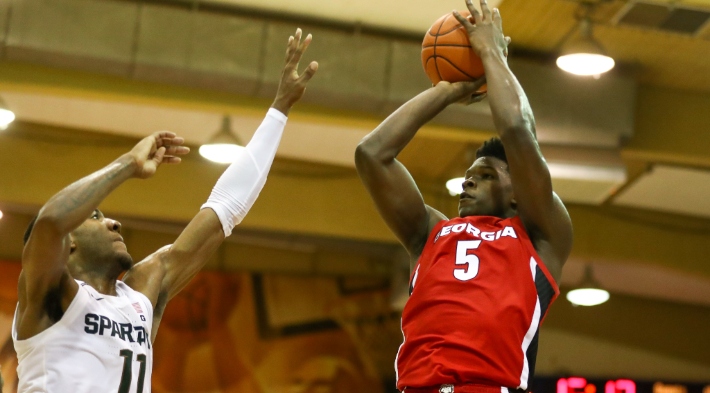
The race for No. 1 should be wide open at this point but, in taking stock around the league, Edwards sits atop the most draft boards and he is now officially in the mix after declaring for the draft. For some teams, he would be a fairly clear choice with this pick. That doesn’t necessarily apply to a team in Golden State that has a Hall of Fame backcourt, but with Klay Thompson’s versatility and the premium placed on wings, the Warriors take the plunge with Edwards. Regardless, there isn’t a generational talent in this class, and that should be kept in mind.
2. Cleveland Cavaliers – Deni Avdija (F, Maccabi Tel Aviv)
Avdija wouldn’t be No. 2 in a big board setting but he’d make a lot of sense for Cleveland. There is at least some uneasiness with his shooting, but Avdija feels the game at a high level, he has good size and should be able to defend competently at both forward spots. Cleveland might consider one of the bigs with this pick if they feel Andre Drummond might walk, but LaMelo Ball would be tough to take given what the Cavs did in the draft the last two years.
3. Minnesota Timberwolves – LaMelo Ball (Illawarra Hawks)
The presence of D’Angelo Russell might make this a bit tricky, but Ball is the best player available here. In addition, Ball’s size opens a lot of doors and Russell has played next to other lead guard options in the past. There are questions about Ball’s jump shot and defensive aptitude, but he is obscenely talented as a passer and creator. It would be hard for Minnesota to pass.
4. Atlanta Hawks – Killian Hayes (Ulm)
Hayes is a favorite of the internet and NBA teams are seemingly catching up… to some degree. The Hawks would probably love to land someone like Edwards to pair with Trae Young, but Hayes checks a lot of boxes. It could be argued that Hayes’ ideal position is point guard, but Atlanta needs another capable creator and he has big-time feel to go with size and projectable shooting.
5. Detroit Pistons – James Wiseman (C, Memphis)
Detroit should probably be shooting for a creator in this draft but, with questions about the players still available, Wiseman would also make some sense for the Pistons. Granted, Detroit could bring back Christian Wood, who had an impressive run in recent weeks. Wiseman is still player that will have some big fans in the NBA and the 7-footer has significant upside.
6. New York Knicks – Cole Anthony (G, North Carolina)
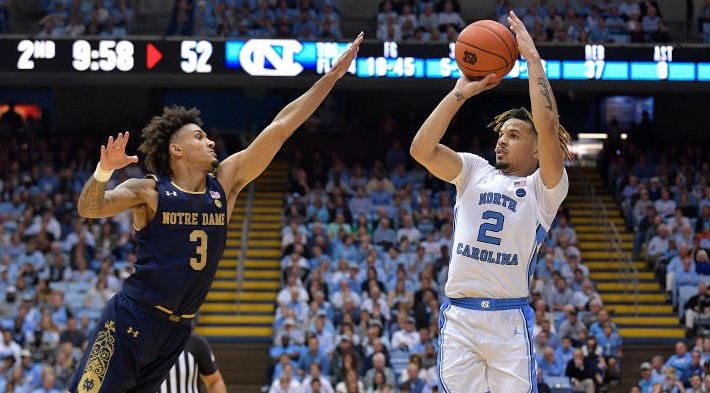
The Knicks are probably heading for “best player available” here but, well, it’s the Knicks. They are pretty susceptible to falling in love with the theoretical upside of a lead creator like Anthony. Make no mistake, he wasn’t especially good at North Carolina, headlined by an extremely pedestrian 50.1 percent true shooting, but if you squint, Anthony could be a high-end scorer at the point of attack. The Knicks are in the market for that.
7. Chicago Bulls – Isaac Okoro (G/F, Auburn)
Candidly, I’ve been a big fan of Okoro for a long time. With that said, it was easier to tout him when he was projected as a late first-round pick than it is with the consensus shooting him into the mid-lottery. The big question with Okoro is a jump shot that is flat-out concerning. It is key to note that the sample size in college was (very) small, but his perimeter shooting numbers were ghastly. If he’s a complete non-threat, it becomes tough but, on the bright side, he does a lot of things well, including a big-time defensive projection and the ability to feel the game as a passer on offense.
8. Charlotte Hornets – Onyeka Okongwu (C, USC)
Okongwu was arguably the best freshman in the country when it comes to college basketball. He’s very good. With that said, he isn’t a prototypical top-10 pick given his lack of size (6’9) at the center position, and it wouldn’t be stunning if he slipped a bit as a result. Okongwu still projects as a high-end defender and his college stats provide an intriguing baseline for offensive efficiency.
9. Washington Wizards – Obi Toppin (F/C, Dayton)
Toppin should probably be the National Player of the Year in college. That’s how good he was at Dayton this season. Offensively, there are very few concerns for a guy with high-end burst and a documented track record of efficiency that is off the charts. However, Toppin will have skeptics because he’s kind of a tweener, especially on defense, and he is already 22 years old. The Wizards do have Rui Hachimura already but, at some point, you just take the best player available. That applies here.
10. Phoenix Suns – Tyrese Maxey (G, Kentucky)
The Suns are seemingly a snug fit for Maxey, even after a college season that featured highs and lows. If you believe he’ll shoot, the offensive game should come together because he’s quite crafty and effective. Defensively, he can be pesky in a way that would complement Devin Booker and, in Phoenix, his profile as a “combo guard” isn’t the worst thing with Booker there to engineer a lot of the offense.
11. San Antonio Spurs – Tyrese Haliburton (G, Iowa State)

I know, I know. The Spurs don’t need another guard. In fact, all of their best prospects are guards. I get it. Haliburton is also a profoundly odd player in almost every respect. With that out of the way, his numbers translate exceptionally well, and the Spurs can plug him in alongside players that might cover up for his limited defense if that end of the floor doesn’t work out. Eventually, San Antonio probably has to make some backcourt decisions and this wouldn’t make it easier… but I like it.
12. Sacramento Kings – Devin Vassell (G/F, Florida State)
The Kings do have wing options, especially if they re-sign Bogdan Bogdanovic, but you can’t have too many 3-and-D options. That is what Vassell is, and he (rightfully) skyrocketed on many boards during the season. In, he has a pedigree as a strong three-point shooter and he projects as a plus defender on the wing. The Kings would be a soft landing spot for him as well, if only because Vassell wouldn’t necessarily be asked to do too much on a team with De’Aaron Fox, Buddy Hield and others.
13. New Orleans Pelicans – R.J. Hampton (G, New Zealand Breakers)
It’s a bit tough to project Hampton’s best landing spot. NBA teams seem to like him and he has big-time pedigree from the high school ranks. On the other end, he wasn’t very good offensively in the NBL and he has a combo guard projection. New Orleans would be a good place for him, though, with players around him to complement his strengths and mitigate his weaknesses.
14. Portland Trail Blazers – Isaiah Stewart (C, Washington)
Stewart is a bit divisive. Unlike his teammate in Jaden McDaniels, Stewart was actually good at the college level, with high-end production and efficiency. However, he is a 6’9 center that might be limited to teams that prefer drop coverage defensively. Portland does fit that bill and, with the close proximity to where he played his college basketball, it seems safe to assume that the Blazers are well-acquainted with Stewart.
15. Orlando Magic – Kira Lewis (G, Alabama)
Markelle Fultz is seemingly projected as Orlando’s starting point guard, but it wouldn’t hurt to bring in another option. Fultz also has the size and athleticism to function next to another lead guard, and Lewis had an impressive season. Scouts will be scared away by his tiny frame, but Lewis is a (very) young sophomore with high-end equity as a lead creator.
16. Minnesota Timberwolves (via Brooklyn) – Saddiq Bey (F, Villanova)
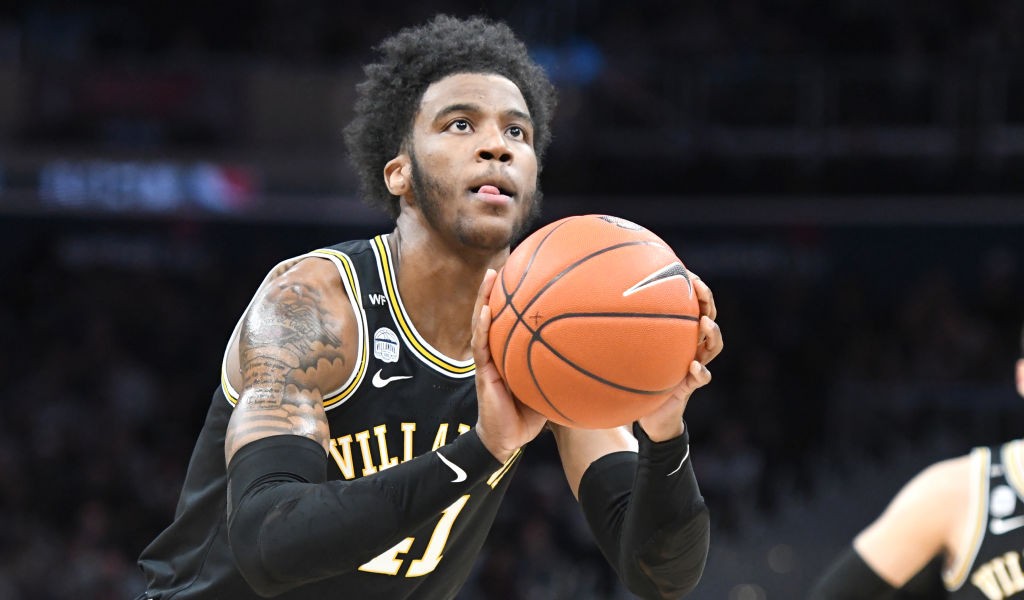
This is a bit of a no-brainer pick for the Wolves. Bey steps in as a 3-and-D forward that can really shoot it and he knows what he’s doing on the court. Considering the other pillars of the team in Karl-Anthony Towns and D’Angelo Russell, Minnesota is going to have to find some role players that can defend. Bey can.
17. Boston Celtics (via Memphis) – Theo Maledon (G, ASVEL)
The Celtics can use another guard, simply because of the wasteland that sits behind Kemba Walker. Maledon isn’t a pure point guard, but he can pair with Marcus Smart to give them options. In addition, Boston just takes the highest-rated player available.
18. Dallas Mavericks – Aleksej Pokusevski (C/F, Olympicacos)
This is a shot in the dark. Dallas does a good job scouting overseas and they can afford to be patient with Pokusevski. Whichever team selects him will need to be patient because, well, he isn’t close to being ready. What he is, though, is a 7-footer that can shoot and move at a high level. Teams are starting to buy it, even if this is probably a touch too high.
19. Milwaukee Bucks (via Indiana) – Aaron Nesmith (G/F, Vanderbilt)
The Bucks don’t need much, but Nesmith is a legitimately elite shooting prospect. Kyle Korver can’t play forever and, if nothing else, Nesmith would give them a bomber. He also might have the ability to become a league-average defender and, if that happens, there is starter equity here.
20. Brooklyn Nets (via Philadelphia) – Josh Green (G/F, Arizona)
Green’s stock has tumbled a bit, largely due to uneven offensive performance at Arizona. The Nets won’t really need him to do a ton on that end, though, and Brooklyn can safely add a quality defensive prospect to pair with their high-end offensive players. He checks boxes defensively that most of their current roster does not.
21. Denver Nuggets (via Houston) – Precious Achiuwa (F/C, Memphis)

Achiuwa is a bit of a strange fit. At times, he seems to have a bit too much confidence in his abilities on the perimeter offensively, but, when he’s dialed in around the rim, Achiuwa is highly productive and efficient. He’d be a nice replacement for Mason Plumlee if the Nuggets moved on, and Denver has a lot of uncertainty in the frontcourt alongside Nikola Jokic.
22. Philadelphia 76ers (via Oklahoma City) – Nico Mannion (G, Arizona)
Because of his weird season at Arizona, Mannion seems to be all the way out of the lottery conversation and it wouldn’t abjectly stun me if he fell to the second round. Philly would be an intriguing fit for him, simply because Mannion wouldn’t have to be a full-time starter. He can spell Ben Simmons, using his creation aptitude and ability to run a team. If he never becomes a high-end shooter, it’s not going to work, but that’s a bet that a team can make.
23. Miami Heat – Patrick Williams (F, Florida State)
Williams is easy to slot in with a lot of teams from the middle of the first round all the way through the end. To put it plainly, he’s a 6’8 combo forward with 3-and-D potential. The Heat, along with most teams, could use that archetype for the future.
24. Utah Jazz – Xavier Tillman (C, Michigan State)
Utah has Tony Bradley and Ed Davis under contract for 2020-21 and they may not see backup center as a need area. Tillman would be masterful in that role, however, and he’s someone who has tremendous aptitude on both ends of the floor. He won’t wow anyone with production but, at this point in the draft, he doesn’t have to.
25. Oklahoma City Thunder (via Denver) – Tre Jones (G, Duke)
The Thunder are heavy on point guards at this very moment, but they could move on from Chris Paul and Dennis Schröder has only one year remaining. Jones also feels like a “Thunder-y” player in that he has shooting questions, but all kinds of defensive talent and tenacity. It is possible Oklahoma City wants nothing to do with a lead guard here, but if they do, he’d fit.
26. Boston Celtics – Jaden McDaniels (F, Washington)
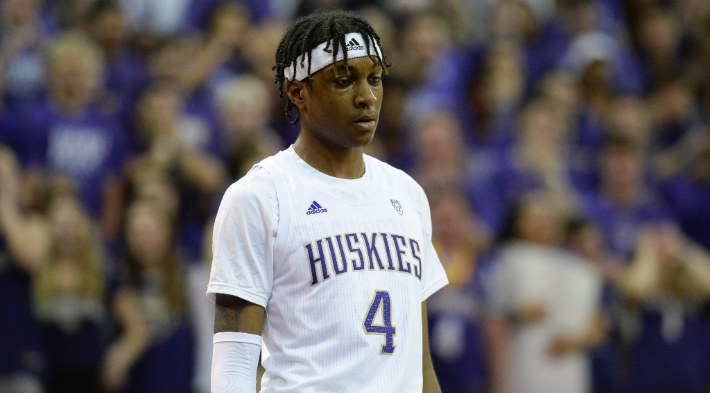
No one knows what to do with McDaniels. He was pretty bad for much of the season at Washington and, as a result, he fell from a consensus top-10 pick all the way to the point where many would argue he isn’t a first-rounder. To counter that, he still checks a lot of theoretical boxes as a 6’10 forward with tools, and Boston can afford to take the swing given their present-day situation and trio of first-round picks.
27. New York Knicks (via L.A. Clippers) – Jalen Smith (C/F, Maryland)
New York probably doesn’t need another big man, especially if the summer goes a certain way. On the flip side, Smith does things that Mitchell Robinson can’t do, spacing the floor and providing a combo big element. If you believe in his defensive uptick this season at Maryland, he’s a first-round talent.
28. Toronto Raptors – Daniel Oturu (C, Minnesota)
The Raptors are a bit of a strange team to peg in this slot, with a lot of uncertainty in free agency, etc. Oturu earned his way into the late first-round discussion with impressive production this season, and he is very long in terms of wingspan projection. Defensively, it is fair to question how it works, but his productivity is intriguing.
29. Los Angeles Lakers – Jahmi’us Ramsey (G, Texas Tech)
Ramsey is a bit of a tough evaluation, simply because his distribution numbers weren’t overwhelming in Lubbock. He is a legitimate 6’4, though, and Ramsey shot the ball at a high level this season. He’d be a nice value here and a reasonable fit as a catch-and-shoot option in a LeBron-centric offense.
30. Boston Celtics (via Milwaukee) – Vernon Carey (C, Duke)
Boston probably (?) won’t make/keep three first-round picks but, if they do, Carey wouldn’t be a bad flyer. He was quite good at Duke and wouldn’t be a crazy investment here. Defensively, there are huge questions but, considering Boston’s success with Enes Kanter, maybe Brad Stevens can figure it out with Carey.

